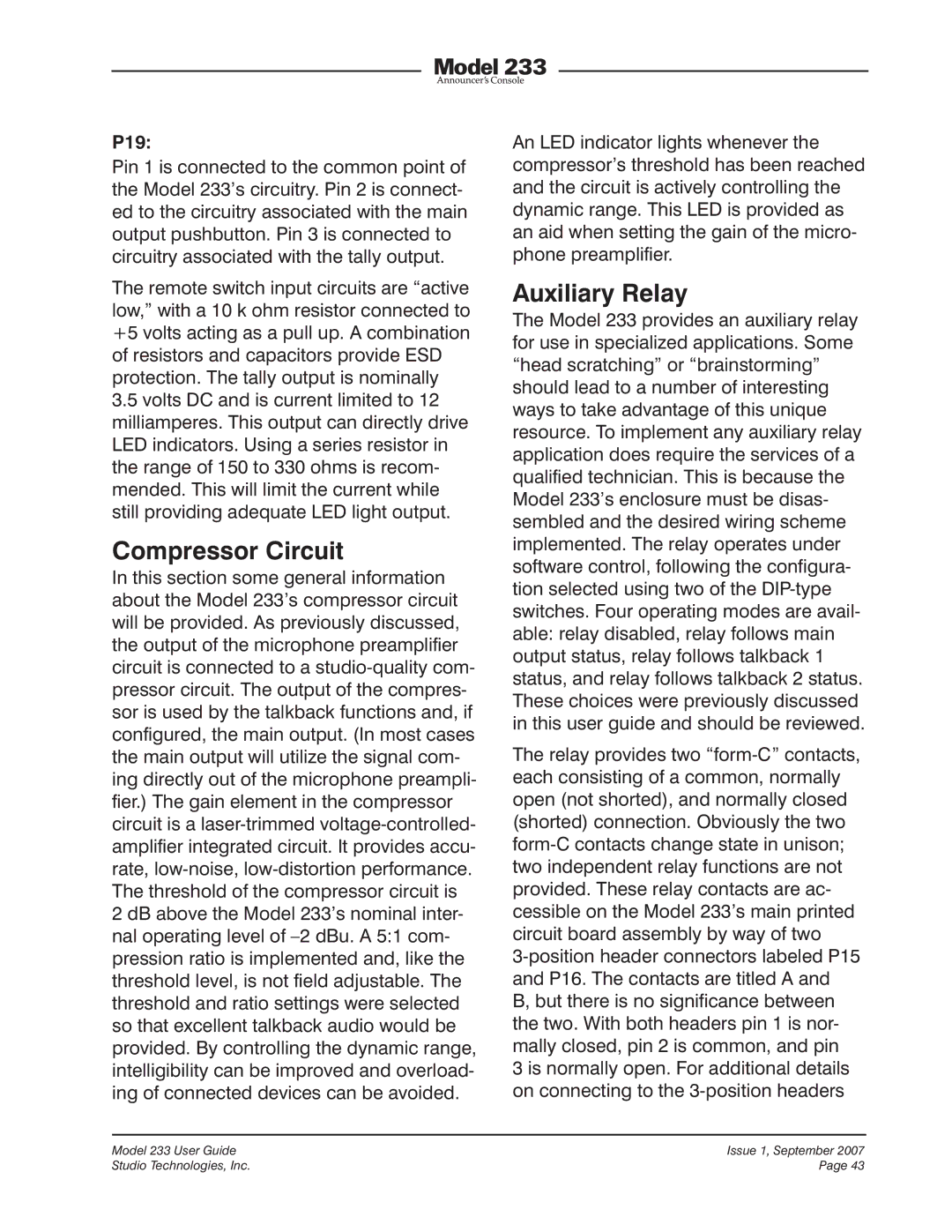
P19:
Pin 1 is connected to the common point of the Model 233’s circuitry. Pin 2 is connect- ed to the circuitry associated with the main output pushbutton. Pin 3 is connected to circuitry associated with the tally output.
The remote switch input circuits are “active low,” with a 10 k ohm resistor connected to +5 volts acting as a pull up. A combination of resistors and capacitors provide ESD protection. The tally output is nominally
3.5volts DC and is current limited to 12 milliamperes. This output can directly drive LED indicators. Using a series resistor in the range of 150 to 330 ohms is recom- mended. This will limit the current while still providing adequate LED light output.
Compressor Circuit
In this section some general information about the Model 233’s compressor circuit will be provided. As previously discussed, the output of the microphone preamplifier circuit is connected to a
2 dB above the Model 233’s nominal inter- nal operating level of
An LED indicator lights whenever the compressor’s threshold has been reached and the circuit is actively controlling the dynamic range. This LED is provided as an aid when setting the gain of the micro- phone preamplifier.
Auxiliary Relay
The Model 233 provides an auxiliary relay for use in specialized applications. Some “head scratching” or “brainstorming” should lead to a number of interesting ways to take advantage of this unique resource. To implement any auxiliary relay application does require the services of a qualified technician. This is because the Model 233’s enclosure must be disas- sembled and the desired wiring scheme implemented. The relay operates under software control, following the configura- tion selected using two of the
The relay provides two
3 is normally open. For additional details on connecting to the
Model 233 User Guide | Issue 1, September 2007 |
Studio Technologies, Inc. | Page 43 |
